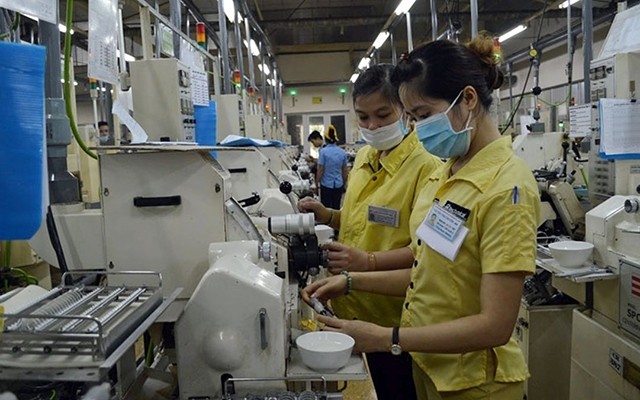According to the General Statistics Office (GSO), Vietnam still maintained a trade surplus of US$816 million in January. However, in February, the trade balance reversed with the trade deficit of US$900 million, thereby, the country's trade balance enjoyed a slight deficit at US$84 million.
Despite the early efforts from the relevant agencies to control African swine fever, the disease is showing signs of rapid spread, negatively affecting production and the psychology of farmers. In addition, the speed of disbursement of public investment remains sluggish.
The Ministry of Planning and Investment (MoPI) judged that the Vietnamese economy is facing many difficulties and challenges, particularly the risk of avoiding the origin of goods from several countries to Vietnam and the change of the supply chain as the US – China trade war is increasing. Meanwhile, the process of economic restructuring and growth model transformation in the country is facing great limitations.
In order to achieve the GDP growth rate of 6.6% - 6.8% as planned at the first construction growth scenario in the end of 2018, the MoPI said that ministries, agencies and localities should deploy their best efforts and take advantage of all opportunities from both domestic and international factors. It is crucial to focus on implementing measures to accelerate production and business activities to push the GDP growth of the industry and construction sectors (third region) in the remaining three quarters of 2019 higher than the set scenario. According to the GSO, the sectors enjoyed a growth rate of 8.85%, contributing 48.6% to the general growth of the whole economy. In particular, the industry sector maintained a growth rate of 8.79%, accounting for 28.44% of the GDP.
There are many opportunities for industrial development in 2019 thanks to the positive impact from the improvement of the business environment that contributed to better growth of the investment in production and the private sector. Moreover, the Comprehensive and Progressive Agreement for Trans-Pacific Partnership (CPTPP) officially came into force, which will increase the investment capital into Vietnam, creating a new production capacity.
Recognising the advantages and difficulties for the country’s socio-economic development in the first two months of this year, the Government has asked the ministries and agencies to review and update the quarterly growth scenario of each sector to be submitted to the MoPI for the report to the Government in March. This is the second year in a row that the Government has required quarterly growth scenarios so that personal responsibilities in management will be clarified, towards the highest target.
In addition to measures to promote production and economic growth, the MoPI asked the ministries, agencies and localities to closely monitor the changes of prices in both domestic and world markets in order to timely and proactively handle arising problems, thus ensuring the target of curbing inflation below 4%.
Associate Professor and Dr. Ngo Tri Long said that normally, the first quarter usually records the lowest growth rate in the year due to the long Tet (Lunar New Year) holiday, however, it is essential to set appropriate solutions to boost growth so that the 2019 GDP will not be lower than the previous year.
He also noted that inflation in the first quarter has not been worrisome but inflation control will witness many issues to be addressed from the second quarter. In March, the consumer price index (CPI) will reflect the impact of the gasoline price adjustment, while the increase of 8.36% of the electricity price will affect the CPI in April and the following months.
Dr. Long also analysed that under the Decision No.24 by the Government, the electricity price would be adjusted to rise in the range of 5% - 15%, however in fact, it has been increased around 6% - 7% in recent years to keep the target of curbing inflation. Electricity price is the input costs of many manufacturing industries, so the increase of electricity price will have all-round impacts on the economy, causing GDP reduction and inflation to increase. The rise of 8.36% is high, requiring the relevant agencies to set measures to prevent the price increase of other commodities, he added.
Another notable issue is the hidden price of food in the context of the outbreak African swine fever in many localities. Pork is an important food in people's daily meals, so the disease will affect the ability to re-herd later, causing the reduction of the supply sources and pushing the prices up. According to experts, inflation control has begun to face unfavorable factors compared to the last year. The fact requires the close coordination among ministries and agencies to prevent price increases of essential goods, while maintaining the proactive and flexible management of monetary policies. Furthermore, it is crucial to tighten the coordination between fiscal policy and price management policy, ensure macroeconomic stability, promote economic growth and curb inflation.
















